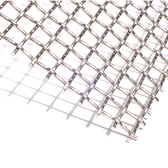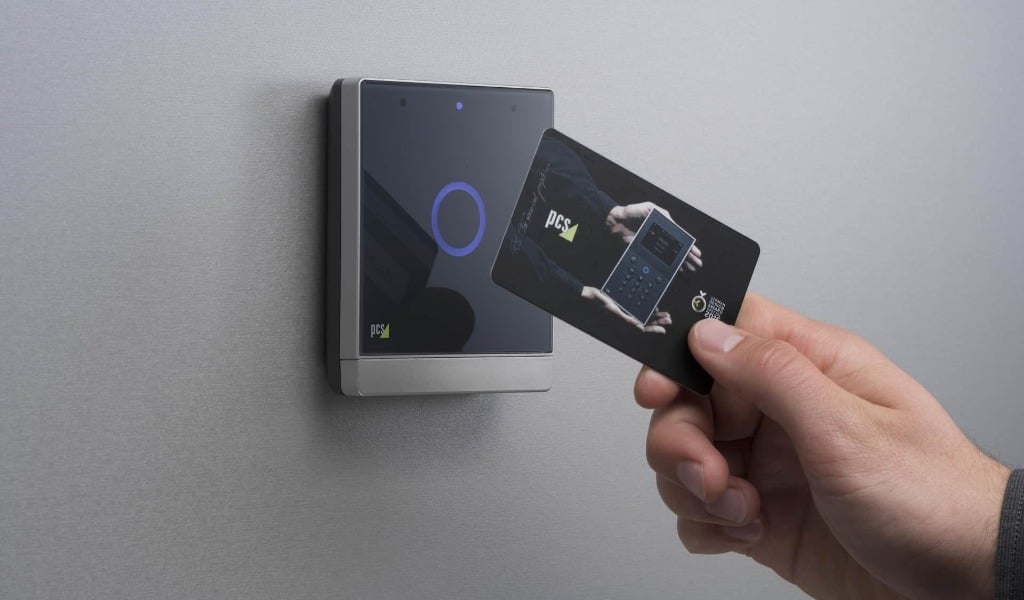RFID Tag Screen Printing With Woven Wire: What Are the Pro and Cons?
RFID tags are the unsung hero that grants countless industries the ability to track, trace, and manage their people and assets with ease. To ensure seamless functionality, the manufacturing process must be meticulously detailed.
A key aspect of this manufacturing process is reliable screen printing that uses an efficient screen media, like woven wire mesh. With so many screen media out there, your success depends on understanding how each screen media material will affect your process.
This probably leaves you curious as to how woven wire mesh impacts the production of RFID tags.
W.S. Tyler has been a pioneer of innovative screening solutions designed to make the world a cleaner, safer place to live for over 150 years.
And with that, we wrote the following article to highlight woven wire's role in the production of reliable RFID tags. It will cover:
- The definition of an RFID tag
- What the production of an RFID tag looks like
- The definition of screen printing
- The benefits of using woven wire to screen print RFID tags
- The drawbacks of using woven wire to screen print RFID tags
What Is an RFID Tag?

A radio frequency identification tag, or simply RFID tag, is a device that employs radio waves to transmit data. A tag is comprised of two main components:
- A microchip used to store data
- An antenna to send and receive data
RFID tags are typically designed to identify objects, animals, or people. For this reason, they are used in a wide range of applications, such as supply chain management, toll collection systems, access control, and more.
How RFID Tags Are Made
The fabrication of RFID tags begins with designing and manufacturing an integrated circuit or microchip. This chip facilitates the processing and storage of data, including tag IDs, error codes, and object identifiers.
These integrated circuits/microchips are produced from semiconductor wafers in clean-room condition and are commonly manufactured by a dedicated semiconductor manufacturer.
The next step is to create the antenna. To do so, a thin layer of conductive material is laid on a substrate in the shape of the antenna.
This process typically uses screen printing to ensure peak accuracy and consistency across several RFID tags. Screen printing is also known for its speed and cost-effectiveness.
Nonetheless, this step is vital to the functionality of the RFID tag as the antenna controls how well the tag communicates with an RFID reader.
Once the antenna has been fabricated, a substrate that will house both the chip and antenna must be selected. While various materials can be used, the chosen material must provide stable, durable traits that don't hinder the tag's communication performance.
After selecting a suitable substrate, the chip and antenna can be connected. Specialized tooling is typically employed to handle this step, ensuring the chip and antenna are oriented precisely.
The combination of the antenna, chip, and substrate, jointly referred to as an inlay, is integrated into an encasing, rendering the RFID tag complete.
What Is Screen Printing?
Screen printing, often called serigraphy, is a printing technique used to transfer ink onto a substrate. To do so, an emulsion is applied to a screen media like woven wire, blocking specific areas of the screen to create a design or pattern.
Over time, screen printing has built a reputation for being versatile, providing quality prints on a wide range of substrate materials. For this reason, it is a popular printing solution for posters, textiles, electronics, and more.
Using Woven Wire Mesh to Screen Print
 Woven wire mesh is best defined as a screening medium that employs a centuries-old weaving process to weave hundreds of vertical and horizontal metal wires. The interlocking of these wires forms a grid of uniform pore openings.
Woven wire mesh is best defined as a screening medium that employs a centuries-old weaving process to weave hundreds of vertical and horizontal metal wires. The interlocking of these wires forms a grid of uniform pore openings.
Now, what makes this material so appealing is the level of customization it places in your hands to ensure the intended use of the mesh is accommodated. This includes alloy, wire diameter, mesh count, and weave pattern.
For insight into how woven wire is made to accommodate your needs, read the following article:
Now, when it comes to screen printing RFID tags, the characteristics of woven wire can prove to be very beneficial.
A key benefit to using woven wire when screen printing is the sheer durability of the material's metal composition. Often woven using 300 series stainless steel, woven wire can produce consistent prints after numerous printing cycles.
This ultimately minimizes costly screen replacement.
It should also be noted that the heavily monitored weaving process produces weaves outfitted with precise pore openings. These openings ensure ink is evenly and accurately distributed, making for efficient prints that capture every detail.
And when your screen printing RFID tags, this level of precision translates to peak RFID functions.
These benefits work in conjunction to create RFID Tags that deliver the the quality and performance you expect.
The Drawbacks of Using Woven Wire When Screen Printing RFID Tags
While woven wire mesh has proven its ability to deliver accurate screen printing when producing RFID tags, there are some key drawbacks that you must be mindful of. Possibly the most jarring is the cost of woven wire.
It was stated that the minimized need to replace screen printing mesh makes woven wire very cost-effective. And this is true, especially in the long run.
Having said that, the initial cost of woven wire is notably higher than that of similar screen material. This does raise concerns when working within tight budgetary constraints.
Another consideration is that woven wire is relatively rigid. This rigidity can make it difficult to work with certain substrates and inks, hindering the overall screen printing process.
To that end, finer mesh specifications raise the risk of clogging when working with thicker inks.
Now, when it comes to the buying process, it should be noted that woven wire mesh requires specialized tooling and a labor-intensive process to produce. As a result, this can extend lead times.
Optimal Screen Printing Starts With Picking the Right Technique
Radio Frequency Identification Tags are devices designed to track, trace, and manage various forms of information seamlessly. As every component of an RFID tag must be meticulously assembled, manufacturers often employ a woven wire-driven screen printing process when fabricating the internal antennas.
Now, it's important that you understand and apply the best possible screen printing technique to your RFID tags. Doing so will improve the efficiency and reliability of each device you produce.
Having been a prominent entity in the woven wire business for over 150 years, W.S. Tyler is here to help you make the most out of your woven wire screen printing process to produce industry-leading results.
Gain a comprehensive understanding of the most widely used screen printing techniques and equip yourself to better your production line by reading the article below:
About Ronnie Brown
Ronnie is the Content Writer for W.S. Tyler and has four years of experience as a professional writer. He strives to expand his knowledge on all things particle analysis and woven wire mesh to leverage his exceptional writing and graphic design skills, creating a one-of-a-kind experience for customers.




